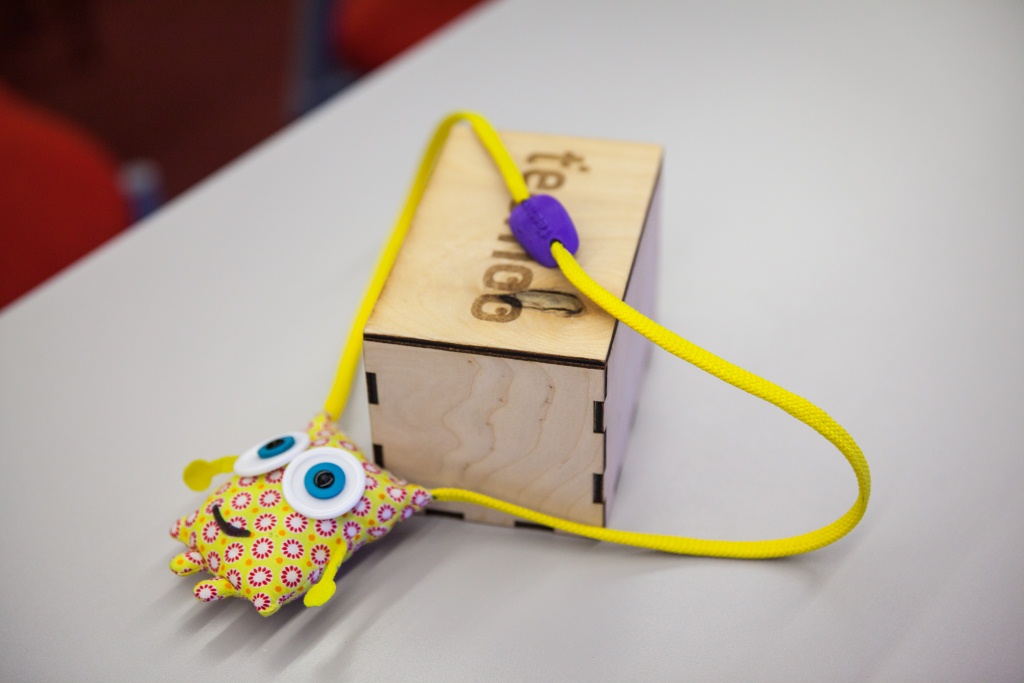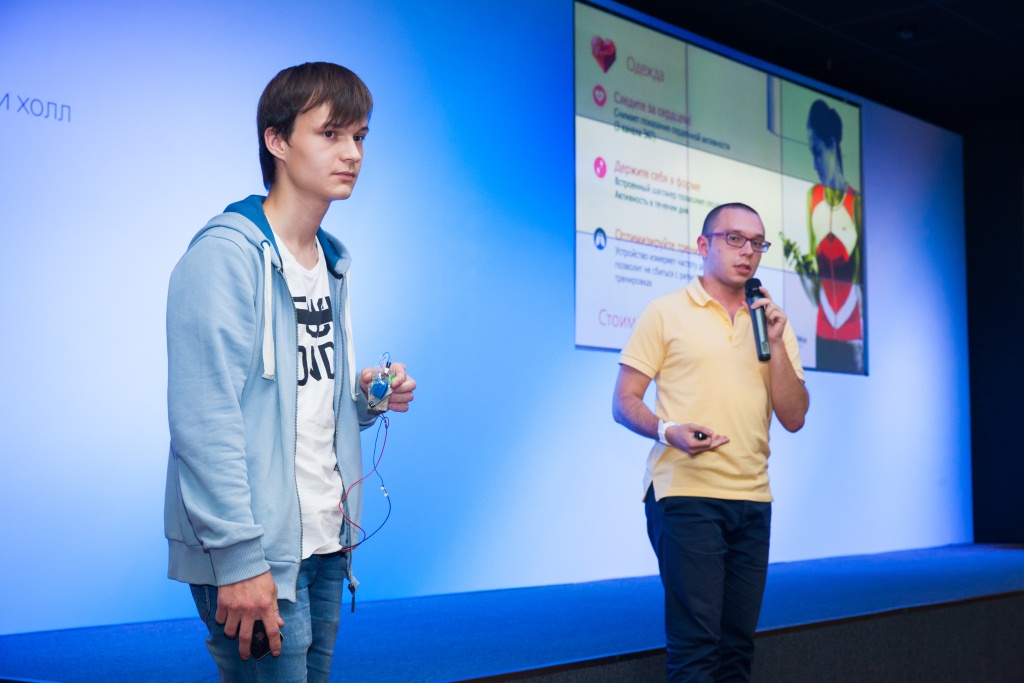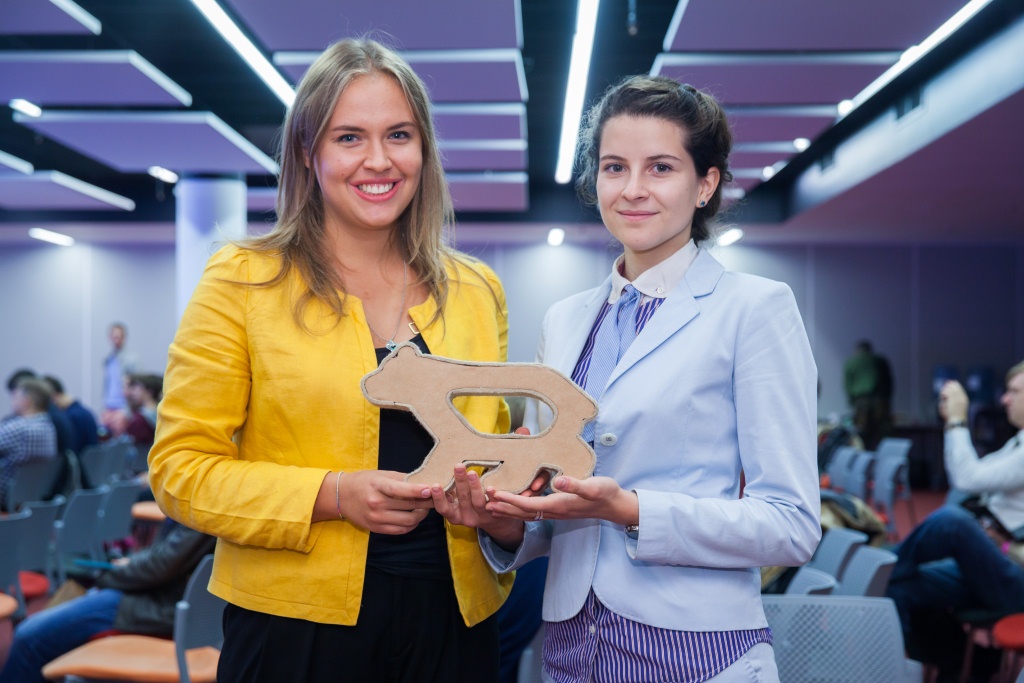Inventing in Just 48 Hours
A cardio-undershirt, a cyber piggy bank, a flying advertising platform, and other unexpected inventions were all the result of the second FabLab Weekend hackathon, which was carried out by HSE’s Prototyping Centre. Participants had just 48 hours to create a prototype of a useful technological product ready to enter the market. The final presentation took place on September 22, when the winners were announced.
The word ‘hackathon’ comes from the words ‘hacker’ and ‘marathon.’ These ‘hacking marathons’ are typically devoted to programming, but the FabLab Weekend hackathon differs from your traditional event. Over the course of 48 hours, participants – among which were programmers, economists, designers, and engineers – not only developed computer software, but created prototypes of devices that actually function. They also used expert recommendations to develop strategies for promoting their new products on the market. The organizers of the hackathon provided the inventors with the necessary equipment free of charge – 3D printers, soldering stations, measurement instrumentation, and other useful tools.
At the final presentation, finalists had three minutes to tell members of an expert jury about the concept behind their project, demonstrate the device’s capabilities by using the prototype, and present a final plan for launching the business.

First place went to the Mobilux project, a flying mobile platform. This pilotless dirigible consists of a balloon with a remote and autonomous control system. The creators of the project say advertisements can be placed on these ‘dirigibles’ to float around the ceilings of large shopping centres. The developers – students from Moscow State Institute of International Relations (MGIMO) and Bauman Moscow State Technical University – have so far demonstrated the ability of the ‘dirigibles’ to hold print advertising. The device will be improved upon in the future, and new forms of advertising will include a scrolling marquee and even video advertisements.
‘Everything started with an idea for a mobile lighting unit that could follow a person everywhere. Then we moved from this fantastical idea to ambitious plans of capturing the aero-advertising niche, which is now still open,’ the developers of Mobilux said.

The jury awarded second place to the Teemoo project, a children’s thermometer of sorts. The device looks like a fun, soft toy that a child can hang around his or her neck. The string has a sensor that allows parents to monitor changes in their child’s temperature remotely and detect the start of a cold early on. Parents can also keep track of the temperature and humidity of their child’s surrounding environment. The jury noted the team’s ingenuity and drive to improve their model, for which team members received the ‘Best Progress in Two Days’ award.
‘The final makeup of our team was formed directly at hackathon, and this is one of the event’s strongest points – you can find colleagues that will help you carry out your ideas right there,’ the head of the Teemoo project, Pavel Ilyichenko, commented.

Third place went to the team that developed the CardiWear t-shirt, a shirt that has sensors to gather information about how your heart is functioning. All data can be saved on the project’s website and at any time transferred to the appropriate doctor. The team also received a special prize from the company Intel for creating the best ‘wearable’ device.
According to the project’s developers, very soon we can expect to see the next boom of gadgets that allow people to monitor their health. The leader of the project, Dmitry Orinichev, drew attention to the fact that their product was currently meant for those who exercise, but the team would like to enter the medical services market in the future in order to help people with heart problems monitor how their heart is working 24 hours a day.

The winner of the special ‘People’s Choice’ award was the MonoHome project, which produces ecological children’s furniture shaped like animals. The customer can choose which animal to make a cabinet or dresser in the form of, as well as the size of the piece and where the shelves will be. All furniture is made from honeycomb cardboard, an easy and very durable material, and upholstered in felt. The creators of the project – Moscow Architectural Institute students Polina Cherpovitskaya and Evgenia Gatsolayeva – said they had serious doubts about coming to the ‘party’ for IT people, but now, having received recognition (the girls also won the ‘Best Product Advancement’ award) and several collaboration proposals, they are certain they made the right decision.
A special prize for the best business plan was given to the Cyber Piggy Bank project (Kiberkopilka), a device that accepts non-cash donations. The creator of the project, Ali Mirzabeyli, is planning to work with charity funds in creating convenient and multifunctional terminals to make donations.
Judging by the presentations, nearly all of the developers are ready to bring their product to market sooner or later. Some of them have even set an approximate timeframe for when their inventions would be for sale.
This was the second hackathon carried out by HSE’s Prototyping Centre together with hardware accelerator Real Inventors. The organizers note that compared with the first hackathon, which took place in summer 2014, the level of preparation shown by participants has grown notably. While the finale of the first hackathon consisted of 12 projects and just eight finished prototypes, the most resent final presentation saw the participation of 16 teams, all of which presented prototypes that actually functioned. Investors, development specialists, and technological and business experts aided participants in their work. The jury consisted of representatives from Skolkovo Startup Academy, Intel, Intelligent Matters, and CMIT Academy. The next hackathon will take place in December of this year.
Liudmila Mezentseva and Elena Sharova
Photos by Mikhail Dmitriev
See also:
25,000
students and beginning entrepreneurs have received training at the HSE Business Incubator over the past five years.


